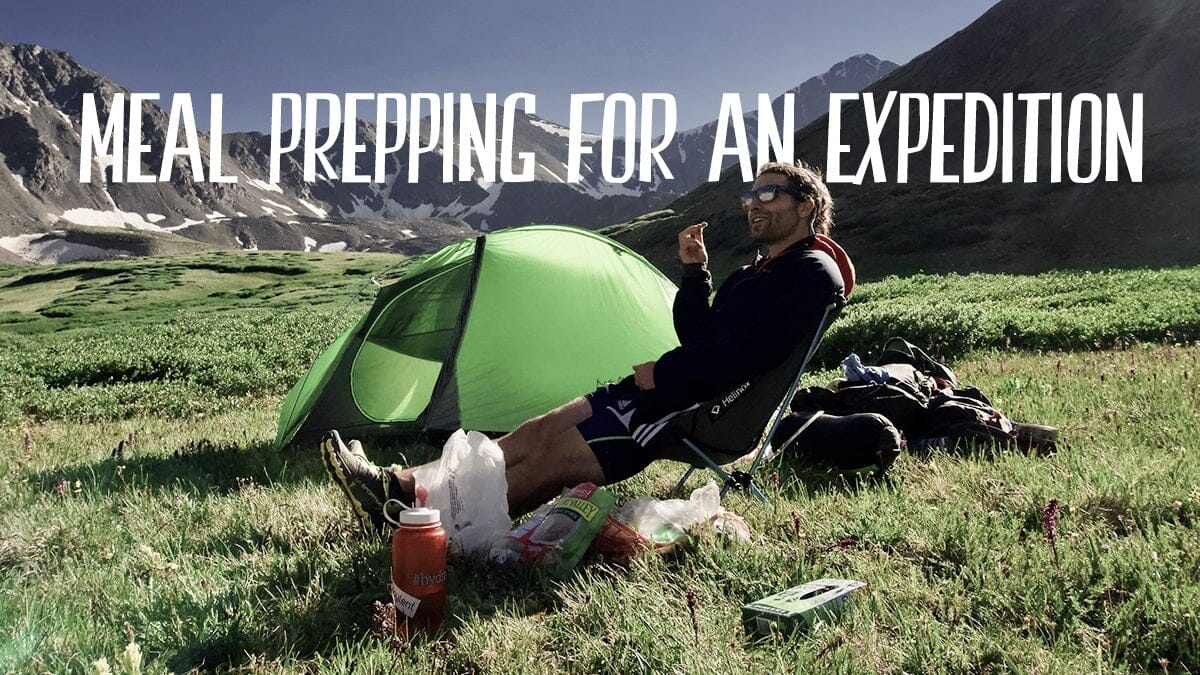Meal Prepping for an Expedition

Planning out your meals (“meal prepping”) is one of the most important elements of preparing for an expedition. In many ways, packing the proper food is as important as packing the proper climbing gear. If you don’t bring enough food or the correct type of food, you’re running the risk of endangering your entire expedition.
By “expedition” we mean an extended backcountry or climbing trip, your expedition might include summiting Denali, big wall climbing in the Himalayas, or an extended backpacking trip in the Grand Tetons. Regardless of where you’re going or what you’re doing, there are many things you’re going to have to consider while planning your expedition meals.
We hope to give you a few pointers on meal-prepping for a multi-day climb, but what you bring on your long trip will ultimately depend on the environment you’re traveling to, the physical activity you’re performing, and your personal diet preferences. That being said, there are a few pointers that apply to most or all expeditions.
Below are five meal prepping tips for an expedition or multi-day climb
Estimate Your Caloric Expenditure
Before departing on any long journey, it’s prudent to take an accurate estimation of how many calories you’re going to be burning. Your total energy expenditure throughout the day is going to vary based on your body size and the type of physical activity you’re performing, but even having a rough estimate will prevent you from drastically overestimating or underestimating your caloric intake.
A large man can easily burn 4,000 calories during a long day in the mountains, while a smaller woman might burn 2,000-3,000. Now is NOT the time to “diet” and try to lose some weight. If you under-plan your food on an expedition, you run the risk of experiencing energy crashes and “bonking” in the middle of a long day.
Don’t Be Afraid of Fat
Fat plays an important role in fueling your body’s aerobic energy system, which is used for prolonged low-intensity endurance activities (like a long day of climbing). If you’re planning for long 10+ hour days in the mountains, whether you’re hiking many miles or climbing 10+ pitches per day, now is not the time to shy away from burning fat.
Example of eating high fat: Many professional climbers carry olive oil and blocks of cheese with them on expeditions. Conrad Anker eats bars of pure congealed olive oil while he’s on Mount Everest.
Don’t Be Afraid of Carbs
Similarly, carbohydrates play a vital role in powering your anaerobic energy system, which is essential for performing physical work at a moderate or high intensity. Most of the climbing we do in the mountains is relatively low intensity, and this might be especially true if you’re spending several long days big wall climbing. However, most outdoor activities require occasional short spurts of higher intensity exercise. For example, if you’re big-wall climbing, you might need a push of energy to get over the crux or pull up the haul bag.
Example of eating high carb: Many professional endurance athletes plan hourly intakes of carbohydrates. Mark Twight ate a carbohydrate gel hourly for nearly 66 straight hours on the South Face of Denali.
Think About Water
Frequently, the most massive thing mountaineers carry into the backcountry is water. How much water you bring on an expedition will vary depending on the environment. For example, if you’re desert climbing in Red Rock (where there’s no access to water), you will be carrying significantly more fluid than if you’re alpine climbing in Chamonix (where’s there’s a ton of glacial run-off).
What does this mean for expedition meal prepping? It depends on the route. If you’re big wall climbing in the desert and you have to pack all your water, you don’t need to eat freeze-dried meals exclusively; traditionally, soups and other watery foods have been popular on big walls. However, if you’re in an environment with lots of water or snow, you might want to minimize your water and add it to your meals later.
Add High-Energy Toppings
Most backcountry explorers are familiar with freeze-dried meals, and some companies market pre-packaged freeze-dried foods to climbers and mountaineers. These meals have, at times, become the standby for many outdoor adventurers because they’re incredibly convenient. Similarly, many other meals are easy to carry in the mountains such as rice, beans, couscous, etc. While these types of meals are convenient, they don’t always provide the energy you need for a long day.
If you’re not getting enough calories in your meals, add high-energy toppings to your foods as a simple solution. For example, you can add some parmesan cheese or olive oil to the top of your freeze-dried meals. It will probably make your meals taste better, and it will prevent you from creating an energetic debt.
Liked and Loaded
There’s a lot to consider when planning a multi-day climb, especially if you’re visiting mountains that are remotely located. In short, you need to make sure you’re packing all the calories necessary to sustain yourself in the mountain.
Packing fatty foods can be a great way to have energetically dense meals with you during long climbs, but you also need to pack carbohydrates to stay energized. Whether or not you choose to bring wet, heavy food, such as soups, will largely depend on the environment you’re climbing in.
Finally, if there’s any chance you’re going to fall short on calories, add some high-calorie toppings to your food. Also, make sure you pack food you like the taste of! There’s nothing worse than a poor-tasting meal after a long day in the mountains.




